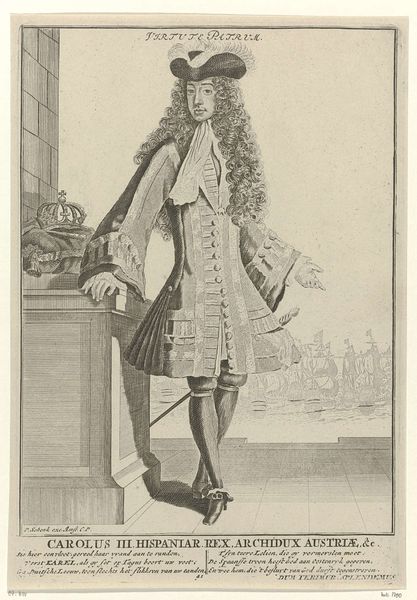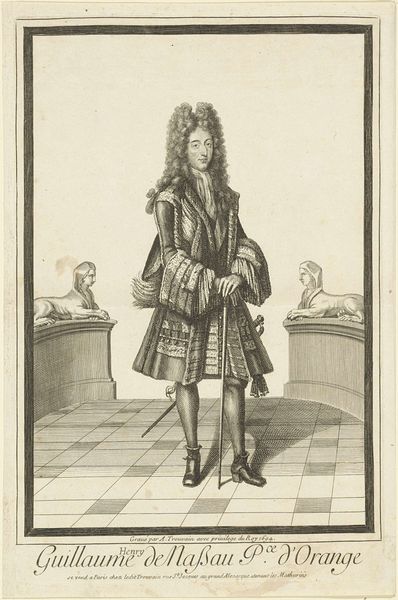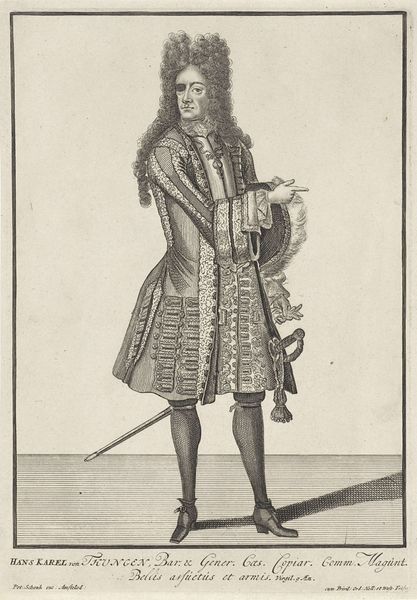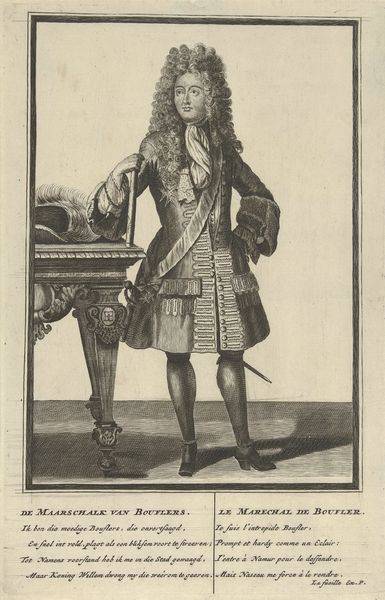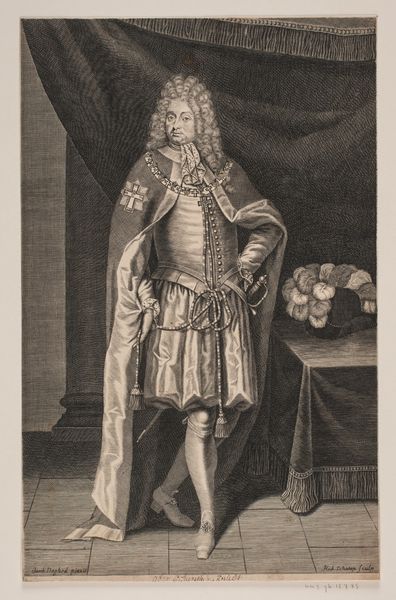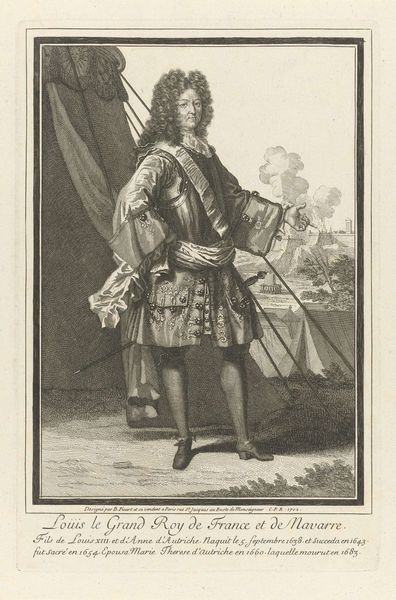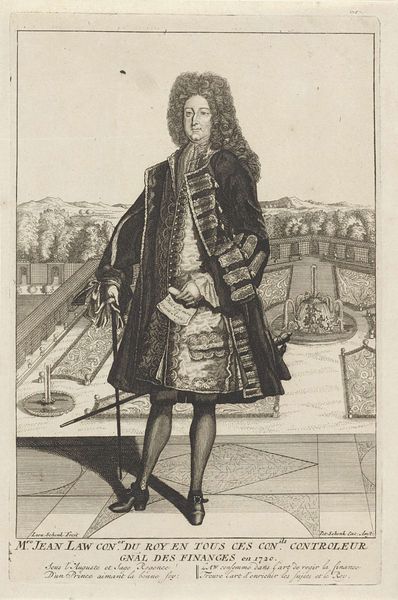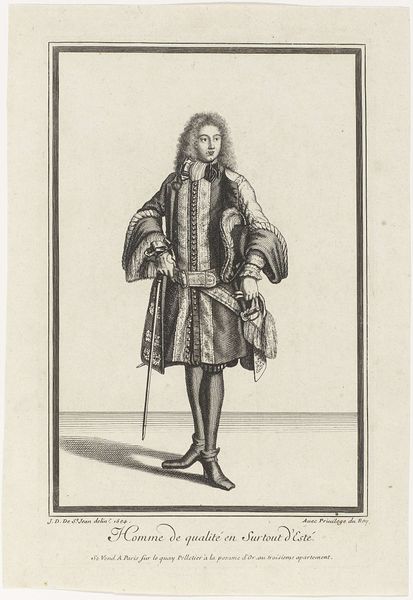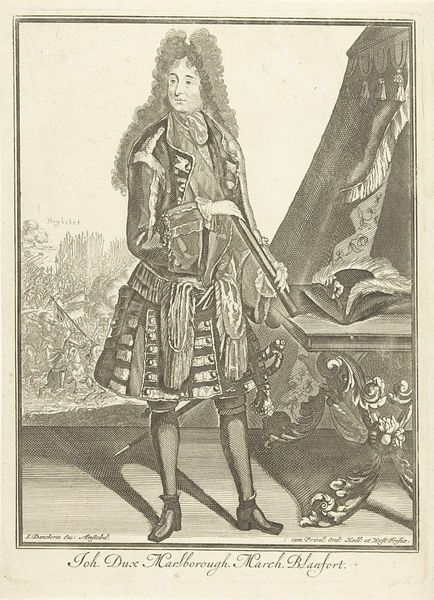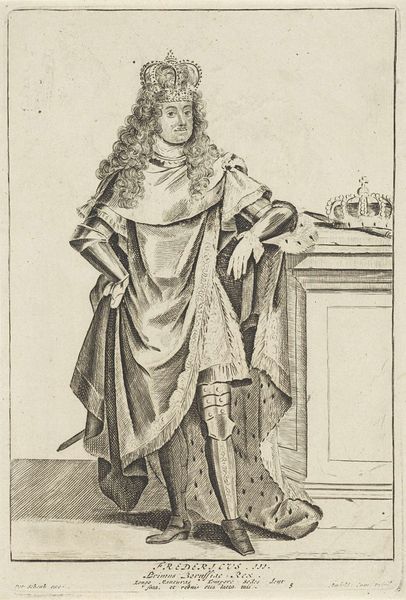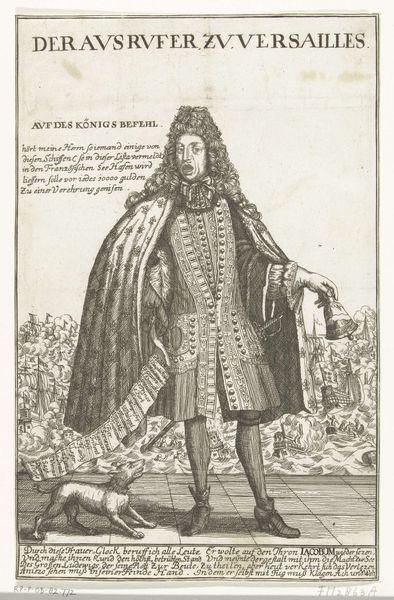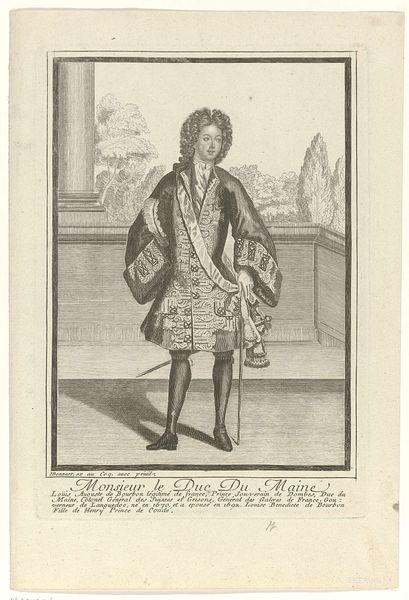
engraving
#
baroque
#
old engraving style
#
history-painting
#
engraving
Dimensions: height 296 mm, width 201 mm
Copyright: Rijks Museum: Open Domain
Editor: Here we have a print entitled "Portret van Willem III, prins van Oranje," created between 1688 and 1711 by Robert Bonnart. It's an engraving, and what strikes me immediately is the intense detail in the rendering of William's clothing. What stands out to you in terms of materials and their impact? Curator: This engraving offers a window into the opulent consumption of the ruling class during the late 17th and early 18th centuries. Think about the labor involved in creating the original garments depicted here. The textiles themselves – probably silk, velvet, and heavily embroidered fabrics – came from global trade networks, often built on exploitation. Consider where the inks came from. Who was making the paper? This portrait speaks volumes about the social context of its creation. Editor: So the *making* of the original fabrics and even the engraving process are part of its meaning? Curator: Precisely. The meticulous detail, achieved through skilled labor-intensive engraving, reinforces the wealth and power it represents. We can examine how the very act of producing copies—prints—further disseminated this image of authority, influencing public perception and solidifying social hierarchies. It raises interesting questions about who had access to such imagery and how it shaped their understanding of power. Editor: That makes me think about the difference between owning the actual, expensive garments versus just seeing them represented in an engraving, a comparatively cheap item. Was Bonnart critiquing wealth or just documenting it? Curator: The print probably wasn't meant as a critique, but from our vantage point, it becomes a document ripe for materialist analysis. The materials themselves tell a story beyond the surface representation. Editor: It's amazing to consider the many layers of labor and resources embedded in a single image. It gives me a completely new appreciation for the engraving as a material object tied to global trade and social power! Curator: Indeed. Focusing on process allows us to engage with the artwork on new terms and reveal stories often left untold by more traditional analyses.
Comments
No comments
Be the first to comment and join the conversation on the ultimate creative platform.
